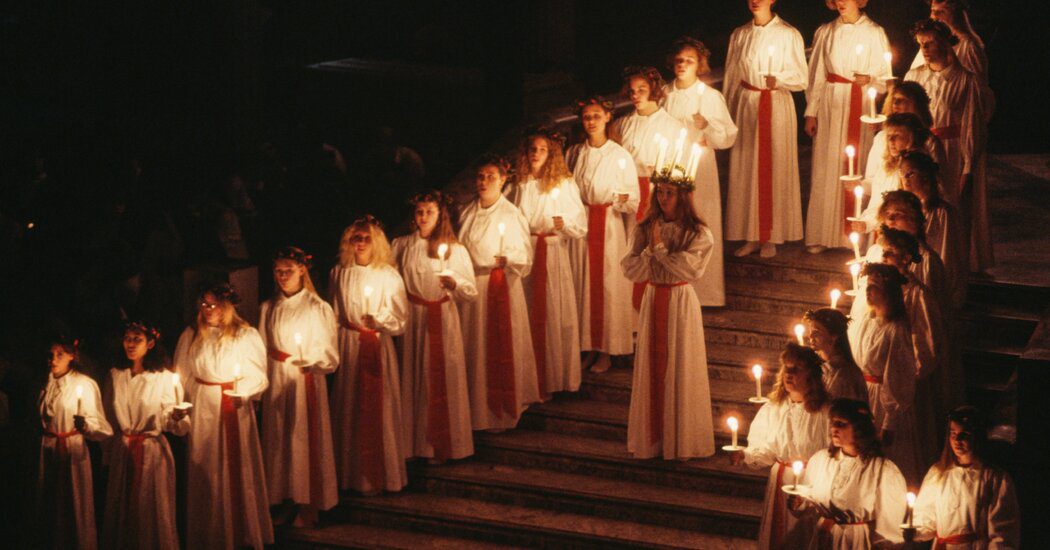Imagine the darkest time of year in Sweden, when the sun never climbs above the horizon in the northernmost part of the country, and in Stockholm, the capital, there’s a scant six hours of daylight. Every day is shorter and gloomier than the last until the nadir — the darkest day of the year — when a young woman appears dressed in a white gown with a blazing crown of candles on her head, singing a familiar song and spreading warmth and light on a frigid winter morning.
That’s the traditional Swedish tale of Lucia, or, as she is sometimes referred to, St. Lucia, a mythic figure who leads candlelit processions all over Sweden on Dec. 13. Luciadagen, or Lucia Day, is one of the most culturally significant holidays in Sweden.
On that day, schoolchildren wear costumes and sing “Sankta Lucia,” the traditional Lucia song, for crowds of teary-eyed parents: “St. Lucia, emblem of lightness, spread in our winter night, the sheen of your brightness,” begins one of the most famous versions. Workplaces hire local choirs to perform for employees, and churches and cultural institutions host processions on the day that many Swedes consider the true beginning of the Christmas season.
“We are fully booked on the 13th of December,” said Ulrika Nordlander, 41, a longtime member of the Stockholm University choir. “From morning to night, we sing in Lucia processions across all of Stockholm.”
Last year, Ms. Nordlander led the procession at one of the city’s most atmospheric locales: Seglora kyrka, an 18th-century wooden church at the open-air museum Skansen.
“It’s an honor to lead the choir and feel that you’re coming in and spreading light and joy,” Ms. Nordlander said. “Especially how it brings light into the darkness, it’s really beautiful to see.”
In addition to celebrations in Sweden, there are Lucia events in U.S. cities like Minneapolis, Philadelphia and New York — places where there are strong Swedish communities. Wherever they are held, it is customary after each procession to gather for coffee, gingerbread cookies and Lucia buns, sweet S-shaped saffron buns dotted with raisins that are known as lussekatter, lussebullar or julgaltar, depending on whom you ask.
A Sicilian saint in Sweden?
But how did Lucia, originally a Sicilian saint from Syracuse, who was supposedly martyred there in the fourth century, become a cultural pillar on the opposite end of the continent, in the historically Lutheran country of Sweden?
“Where she came…
Click Here to Read the Full Original Article at NYT > Travel…
